
How Much Should a Man Spend on an Engagement Ring
When the time comes to take a relationship to the next level, purchasing an engagement ring can be both exciting and daunting.
Many individuals feel overwhelmed by the pressure to find the perfect ring that symbolizes their love without breaking the bank.
The question of how much one should spend on an engagement ring is a common conundrum facing those ready to propose.
Recent studies have shown that the average cost of an engagement ring hovers around 6,000, but figures vary widely depending on personal preferences and regional trends.
In this guide we aim to demystify expenses related to this significant purchase by providing clear guidance grounded in real-world considerations.
From addressing myths about price expectations to offering practical budgeting advice and shopping tips, we’ll equip you with everything needed for a confident buying decision.
Find out how savvy planning can lead to savings without sacrificing quality or meaning.
Key Takeaways
- The average cost of an engagement ring is around $6,000, but prices can vary widely based on factors such as the 4C’s—cut, clarity, color, and carat—and personal preferences.
- Outdated rules like spending three months’ salary on a ring may not fit everyone’s financial situation; it’s smarter to base your budget on individual circumstances and financial goals.
- Online shopping for engagement rings is more popular than ever due to convenience and often lower costs; however, always research retailers thoroughly to avoid risks.
- Alternative stones like sapphires offer unique and budget-friendly options compared to traditional diamonds.
- Comparing prices across different jewelers can lead to savings when purchasing an engagement ring; also consider “buying shy” by choosing a diamond just under popular carat weights.
Understanding the Cost of an Engagement Ring
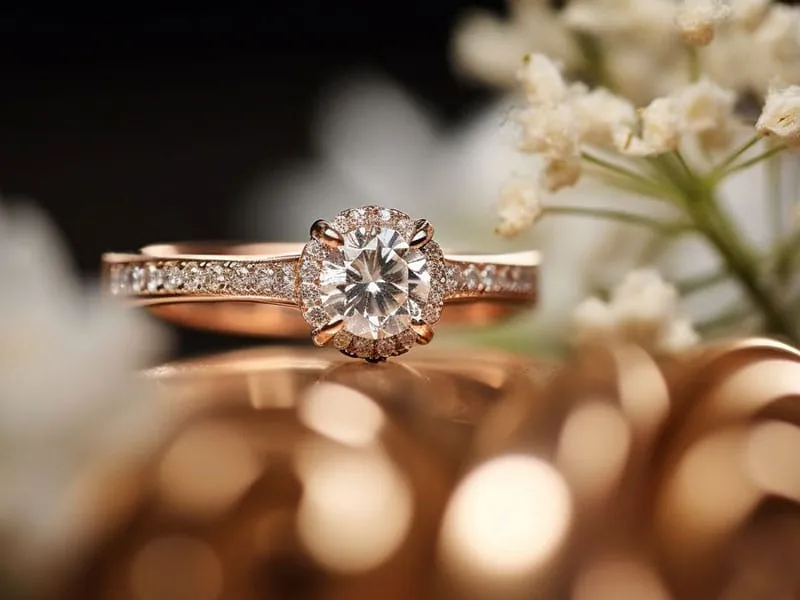
The average cost of an engagement ring is influenced by various factors including the 4C’s (cut, clarity, color, and carat), current trends in the market, and individual preferences.
It’s important to have a clear understanding of these elements before setting a budget for this significant purchase.
Average Cost of an Engagement Ring
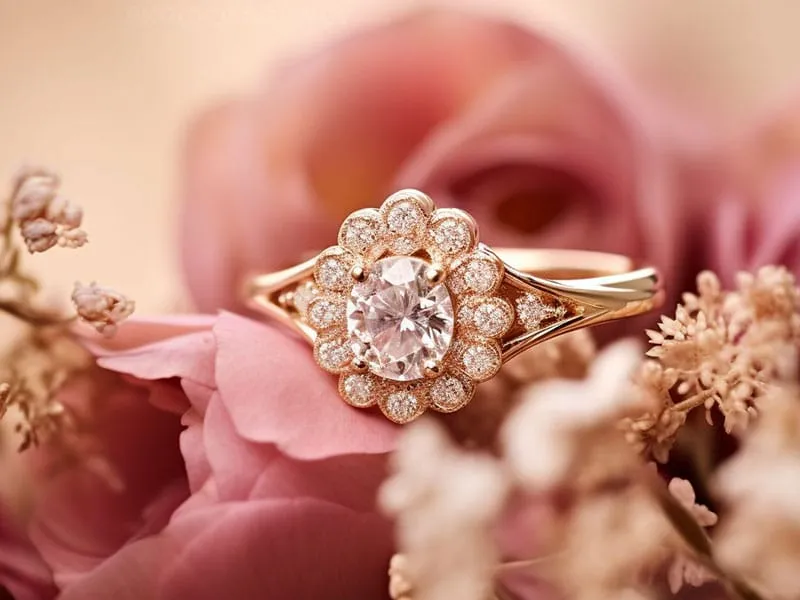
Diving into the world of engagement rings can make your head spin with prices.
According to The Knot, an authoritative source in wedding planning, their 2022 Jewelry and Engagement Study said this:
The average cost of an engagement ring is currently about $6,000. When deciding how much to spend on an engagement ring, several factors should be considered, plus don’t forget to look into engagement ring insurance. While $6,000 is the national average cost of a ring, the spend per couple varies. Our study found that roughly one-third of all respondents are spending between $1,000 to $4,000 on their engagement ring.
The Knot’s 2022 Jewelry and Engagement Study
However, this number can sway dramatically depending on various factors such as location, personal preference, and economic status.
You might find a stunning piece for less or could easily spend upwards of $10,000 for that extra sparkle.
Luxury brands like De Beers are known for their exquisite selections which can set you back considerably more.
It pays to explore all avenues like before locking down on your final choice.
Current Trends
Engagement ring trends constantly evolve, reflecting changes in style and consumer preferences.
Many couples today are choosing non-traditional stones such as rubies or aquamarine to stand out from classic diamond settings.
These colorful alternatives often allow for a more personalized touch and can sometimes offer better value.
Sustainable and ethically sourced jewelry is also gaining traction among socially conscious buyers.
People increasingly demand materials that not only look good but also come with the assurance of responsible mining and labor practices.
Meanwhile, custom designs are on the rise as partners seek unique rings that capture their individual love stories.
Mixing metals within engagement rings and wedding bands has become fashionable, offering a modern twist to traditional gold or platinum choices.
Some opt for rose gold accents which add warmth and romance to the piece.
Technological advancements have changed shopping habits significantly; online diamond shopping is becoming more popular due to convenience and often lower prices compared to brick-and-mortar stores.
Retailers respond by enhancing their websites with detailed photos, 360-degree videos, and augmented reality apps so customers can get a close-up feel without needing to visit a store.
During special sales events like Cyber Week, clever shoppers take advantage of promotions to secure high-quality pieces at reduced costs while using credit cards like American Express to earn cash back or points.
These shifts indicate an industry that’s adapting swiftly as expectations change—highlighting personalization, ethics, innovation in retail experiences, material diversity beyond diamonds, and financial savvy through targeted deals during big sale periods.
Common Myths About Engagement Ring Costs
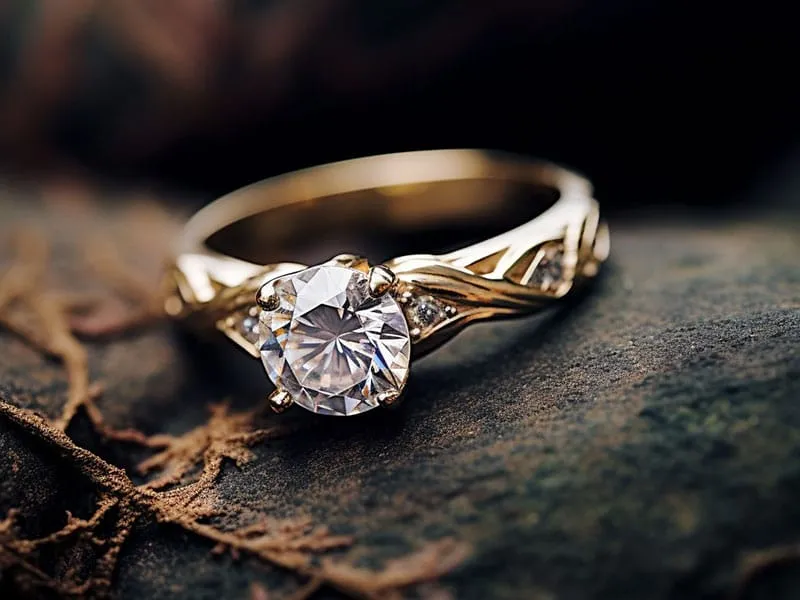
There are common misconceptions surrounding the cost of engagement rings, such as the outdated “three month’s salary” rule and risks associated with online shopping.
Let’s debunk these myths and explore a more practical approach to setting a budget for an engagement ring.
Three Month’s Salary Rule
The Three Month’s Salary Rule is a well-known wedding tradition suggesting you should spend what you earn in three months on an engagement ring.
This guideline has been around for decades, shaping many people’s decisions about how much money to shell out for that special piece of jewelry.
However, this rule doesn’t take into account each individual’s financial situation or goals.
Critics argue that adhering strictly to this rule can lead to excessive spending and financial strain.
It overlooks practical considerations such as other upcoming expenses, existing debts, and personal savings goals.
Smart planning calls for a more tailored approach where couples look at their unique circumstances rather than following a one-size-fits-all dictate.
Letting go of the Three Month’s Salary Rule allows you to purchase a meaningful ring without compromising your economic stability or future plans together.
Online Shopping Risks
When shopping for an engagement ring online, it’s essential to be aware of the potential risks.
Ensure that you research and choose a reputable jeweler with positive reviews.
Verify the authenticity of the retailer and look for secure payment options to protect your personal and financial information.
Be cautious about counterfeit or low-quality diamonds by thoroughly reviewing product descriptions and certifications before making a purchase.
Additionally, carefully examine return policies and warranties to safeguard against any unforeseen issues with the ring.
Conduct due diligence on the seller’s background, customer service reputation, and after-sales support to mitigate online shopping risks effectively.
How to Set a Budget for an Engagement Ring
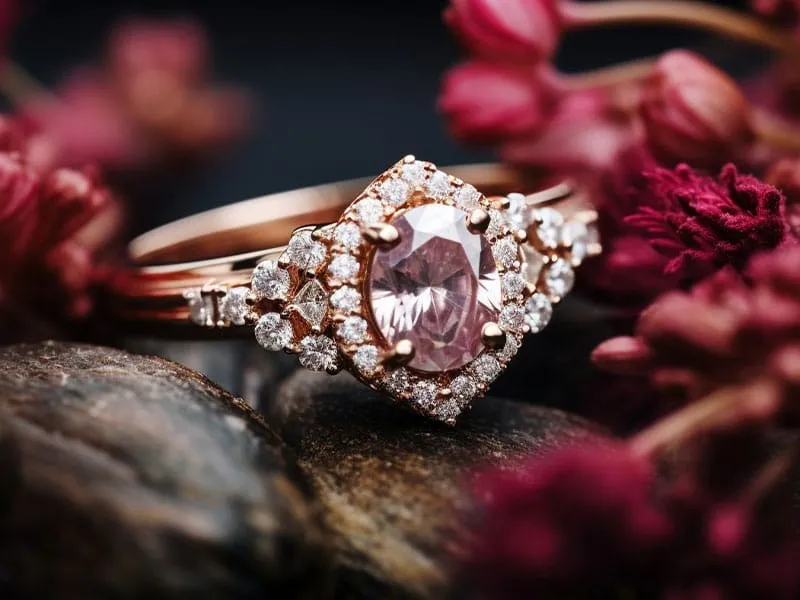
Consider your financial situation and long-term goals when determining the appropriate budget for an engagement ring.
Avoid relying on outdated rules or online calculators, and instead focus on what makes sense for you and your partner in light of your overall financial picture.
Consider Your Financial Situation and Goals
Assess your financial situation and set clear goals before deciding on an engagement ring budget.
Calculate your disposable income and identify any long-term financial commitments.
Set realistic expectations based on your current savings and future expenses to ensure a comfortable purchase without straining your finances.
Evaluate the significance of the ring within the context of your overall wedding budget, debt repayment plans, or any major purchases you plan to make in the near future.
Establishing clear financial objectives will help guide you toward a balanced decision that aligns with both your immediate needs and long-term aspirations.
Ignoring Engagement Ring Calculators
Engagement ring calculators may provide an estimate, but they often oversimplify the decision.
Your financial situation and personal preferences play a crucial role in setting your budget.
Therefore, ignoring engagement ring calculators allows you to make a more personalized and informed decision based on what you can comfortably afford and what holds sentimental value for you.
By disregarding engagement ring calculators, you empower yourself to prioritize factors that matter most to you rather than being bound by generic formulas or industry standards.
This approach ensures that your investment in an engagement ring aligns with your individual circumstances and reflects the significance of this special commitment without being confined by rigid numerical guidelines such as three months’ salary rules or online shopping risks.
Tips to Save Money on an Engagement Ring
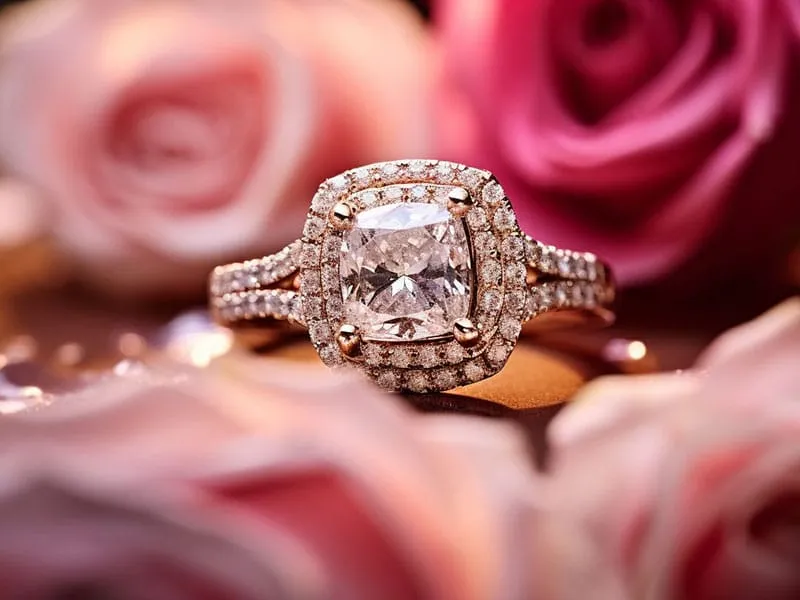
Consider the 4C’s when choosing a diamond, explore alternative stones like moissanite or sapphires, and compare prices from different jewelers to find the best deal.
By following these tips, you can save money without compromising on quality or beauty when purchasing an engagement ring.
Buy Shy
Consider buying a shy diamond for an engagement ring, which refers to selecting a stone that falls just below the classic weight categories.
This can save you money while still achieving the same appearance as a higher-priced stone.
To save on costs, consider purchasing a diamond with slightly lower carat weight than your ideal size.
This strategy can allow you to allocate funds towards other aspects of the ring or the wedding, making it easier to stick within your budget.
Consider the 4C’s
When looking for an engagement ring, examining the 4C’s—cut, color, clarity, and carat—is vital.
Understanding these factors can help you make an informed decision that aligns with your preferences and budget.
Evaluating the cut determines the diamond’s brilliance and sparkle, while considering color helps find the perfect balance between a pure white stone and one with subtle hues.
Assessing clarity ensures that any imperfections within the diamond are undetectable to the naked eye.
Finally, evaluating carat weight allows you to select a size that suits both your partner’s style and your financial plan without compromising on quality.
Explore Alternative Stones
Consider exploring alternative stones when shopping for an engagement ring. Sapphires, emeralds, and morganite are gaining popularity as unique and budget-friendly options.
These gemstones offer a distinct look while allowing you to maximize your budget without compromising quality.
When considering alternative stones, prioritize factors such as durability and personal significance over tradition to find the perfect ring that reflects your style and values.
Furthermore, colored gemstones can add a touch of individuality to your ring while expressing your personality.
With their diverse range of colors and meanings, these stones can symbolize love in a personalized way that extends beyond traditional clear diamonds.
Compare Prices
Before making a purchase, it’s essential to compare prices from different retailers.
Look for reputable jewelers both online and in-store, ensuring you’re getting the best value for your budget.
Check for any ongoing promotions or discounts that may help you save money on the engagement ring without compromising quality.
By comparing prices diligently, you can make an informed decision about where to buy your engagement ring, ultimately securing the best deal possible without sacrificing the ring’s significance or quality.
Conclusion

In conclusion, understanding the cost of an engagement ring is crucial for making a well-informed decision.
Setting a budget based on your financial situation and goals ensures practicality and efficiency in your purchase.
By debunking common myths and considering money-saving tips, you can make a significant impact on the amount spent without compromising quality or sentiment.
Remember to compare prices, explore alternative stones, and seek reputable sources for guidance.
This thoughtful approach will not only save you money but also lead to finding the perfect symbol of love that aligns with your values and priorities.
FAQs About Buying an Engagement Ring
What’s the average cost of an engagement ring?
The average engagement ring cost swings widely, depending on various factors like style and where you purchase it. However, it can range from a few hundred to several thousand dollars. Our study found that roughly one-third of all respondents are spending between $1,000 to $4,000 on their engagement ring.
How do wedding traditions affect how much I should spend on a ring?
Wedding traditions often suggest spending around two months’ salary on an engagement ring, but this is not a hard rule. What matters most is choosing a ring that suits your budget and your partner’s taste.
Can the type of wedding dress influence my budget for an engagement ring?
While the choice of wedding dresses – be it mermaid dresses or other styles – doesn’t directly impact your engagement ring budget, allocating funds across all aspects of your wedding wisely ensures balance in expenses.
Should I consider APR when purchasing an engagement ring with credit?
Absolutely! If you’re buying a wedding ring using credit, check the Annual Percentage Rate (APR) as it impacts the total amount you’ll pay over time, including any interest and fees for borrowing.




